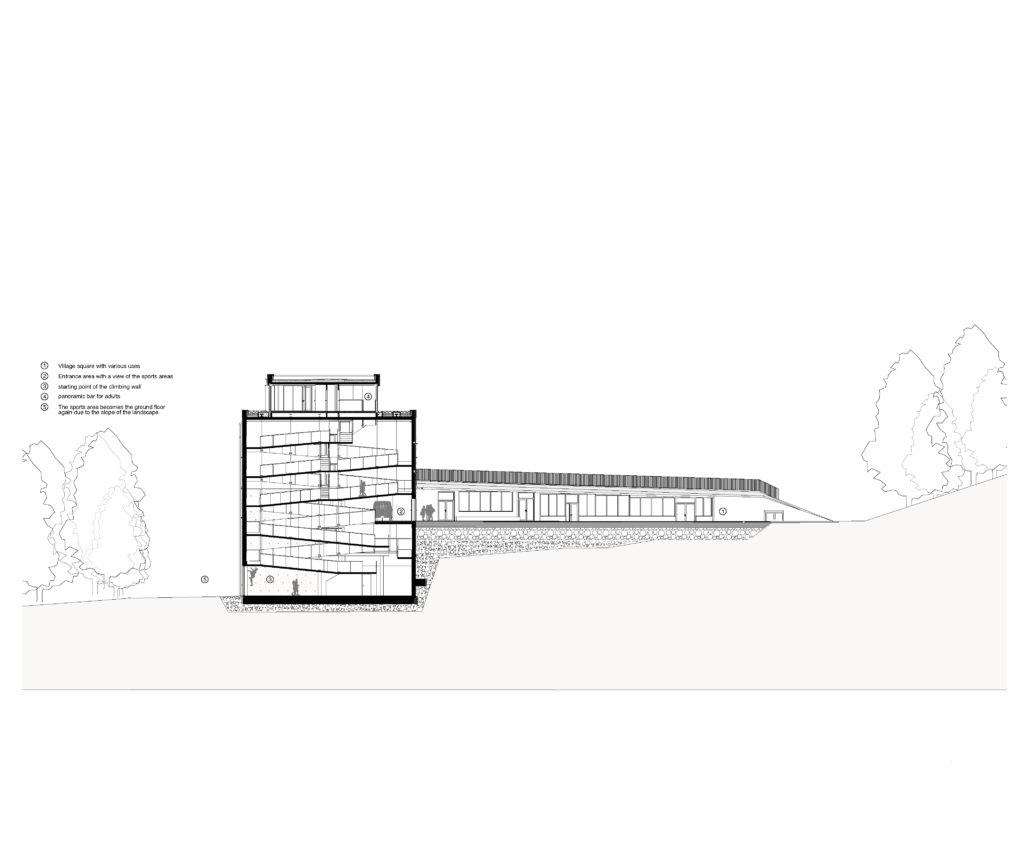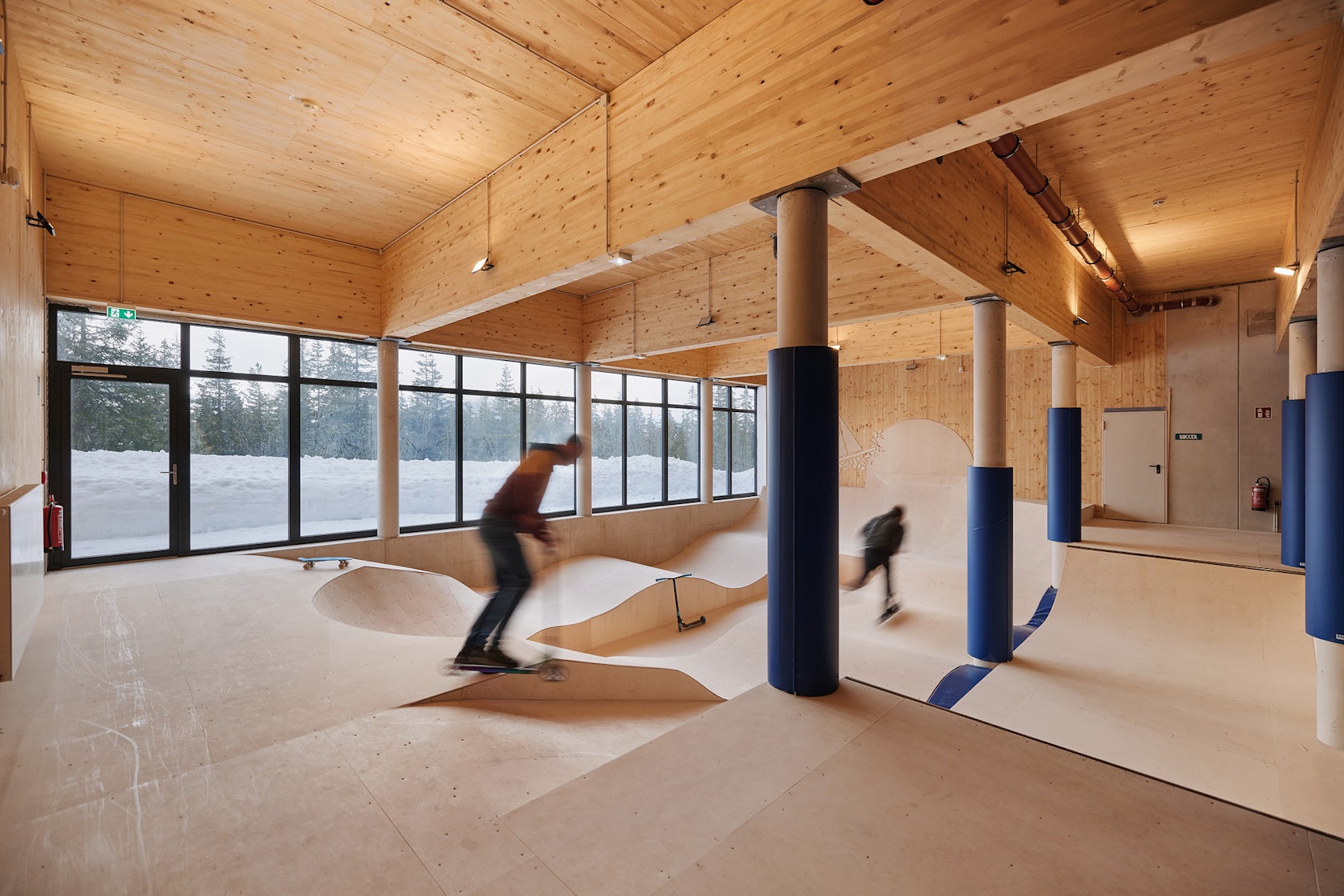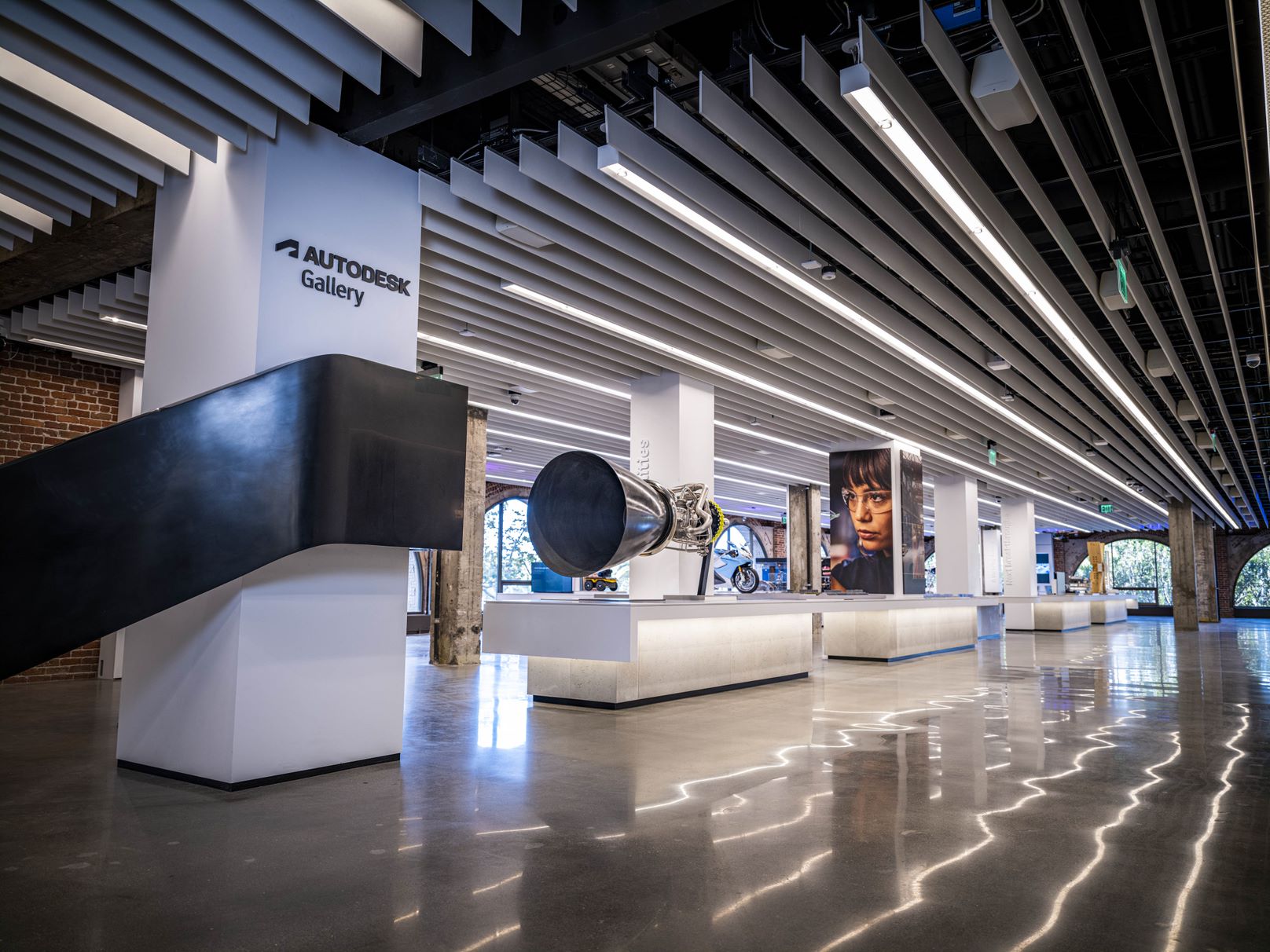Youthhostel Gerlos – The location of the youth hostel was essential for the design of the project. The hostel is located 1700 meters above sea level in the Austrian Alps. The topography is high alpine, and it was important to us to carefully handle the surrounding landscape and environment. The youth hostel is the first largest structure in the location and with its U-Shaped plaza, creates a central square that previously did not exist in this part of the village. The building is “woven” into the landscape and the wooden façade will continue to merge with the forest over time through graying. The functional and spatial allocation plans with many indoor sport facilities allows for an exciting interior composition. Another defining factor was the low building costs, which allows for affordable prices for school groups.
Architizer chatted with Horst Lechner from Lechner & Lechner Architects to learn more about this project.
Architizer: What inspired the initial concept for your design?
Horst Lechner: For us, the inspiration was the topography and the lack of a central square in that part of the village. We therefore developed an inviting U-shape village square, surrounded by two side wings covered in vegetation that sink into the landscape. The single pitch roof of the main building follows the slope of the street and descends towards the valley. As a result, the longitudinal building section is offset by half a floor in the middle. The eye of the ramp is the logical consequence of the offset of the building structure. This is a 3D dimensional promenade that connects all the public spaces with one another. The true size of the hostel is hidden by the interweaving with the landscape, so that the dimension of the house only becomes noticeable from the promenade. This spatial surprise creates an incredible excitement and is somewhat reminiscent of the magical world of the Harry Potter.

© Julian Hoeck
What do you believe is the most unique or ‘standout’ component of the project?
The heart of our project is the promenade with the views that link the extensive spatial program with a focus on sports. It combines a fully-fledged competition gymnasium, climbing and bouldering walls, trampolines with foam diving pools, a pump track, an indoor soccer field, as well as a sauna area on the roof with the student rooms. Visual connections to the individual areas are made possible again and again through air holes. The promenade opens up the entire building via five large round ramps throughout the entire building. In addition to the ramps themselves, the shortcuts in the form of stairs through the middle of the eye of the ramp create additional spatial tension. Furthermore, there are always semi-open niches with hammocks, seating areas and table football in which school groups can lounge.

© Julian Hoeck
What was the greatest design challenge you faced during the project, and how did you navigate it?
The biggest challenge for us was placing the relatively large building mass on the property in such a way that it does not appear overwhelming. To do this, we placed the main building on the northern part of the property and turned it slightly towards the main street. The single pitch roof falls with the terrain, so that the structure is lower on the valley side. The body of the building is also hidden by the indentations of the side wings, which contain the dining rooms and ski cellars. In addition to the building itself, the low construction costs were a challenge. The goal was to make school trips affordable. We tried to meet these diverse demands while keeping a well-known from Karl Friedrich Schinkel in mind: “It is the duty of architecture to transform the useful, practical and functional into something beautiful.”

© Julian Hoeck

What drove the selection of materials used in the project?
Our architecture firm has a long history of using renewable raw wood. In this project we primarily used cross-laminated timber elements, which were manufactured in the nearby plant in Fügen in Zillertal. The façade is made of larch wood, which will weather over time and eventually take on the color of the surrounding forests. This will allow the main body of the building to better blend-in with the natural environment. The cross-laminated timber in the interior of the building has been left untouched to give room for the students’ traces. The metal cladding in the eye of the ramps creates a strong contrast to the light wood surfaces.

© Julian Hoeck
What is your favorite detail in the project and why?
Basically, the project does not live from its details, but from its spatial complexity and surfaces. For us, the focus was in the eye of the ramp, where the hanging construction with its slender proportions works best.

© Julian Hoeck
How important was sustainability as a design criteria as you worked on this project?
The aim of the project was to be able to offer affordable school trips in an ecological environment. The structure sparingly uses the built-up area. The choice of material for the main building was solid wood, as there is a strong sustainable forest industry in Austria and the building material stores CO2. 1840m3 of wood were incorporated into the youth hostel. The remaining wood, for example from the window cutouts, were processed into furniture. The building is very well insulated, and the heating comes from a nearby biomass power plant. In addition, part of the electricity is generated by a photovoltaic system. The student groups do not arrive individually, but mostly in groups by bus.

© Julian Hoeck
Were any parts of the project dramatically altered from conception to construction, and if so, why?
There were optimizations and refinements both architecturally and on the cost side. The location in the landscape and the newly created village square were already present in the first sketch. From this first sketch, the project has continued to deepen in its essential aspects, and the focus of the changes has always been on the interior.

© Julian Hoeck

© Julian Hoeck
Team Members
Christine Lechner , Paul Lechner, Lukas Ployer, Michael Trixl
Consultants
Furniture Designer : Stehaphan Keil Structural Engineer : Thomas Forsthuber Fire Protection : GOLSER TECHNISCHES BÜRO GmbH House Technic Design Consultant : Bestra GmbH, OPTIPLAN Ingenieurgesellschaft für technische Gebäudeausrüstung und Energiewirtschaft GmbH Geology Consultant : Mag. Andreas Pflügler GmbH
Products / Materials
Manufacturers : GRAPHISOFT, Binderholz / cross laminated timber elements
For more on Youthhostel Gerlos, please visit the in-depth project page on Architizer.







 Youthhostel Gerlos
Youthhostel Gerlos 


